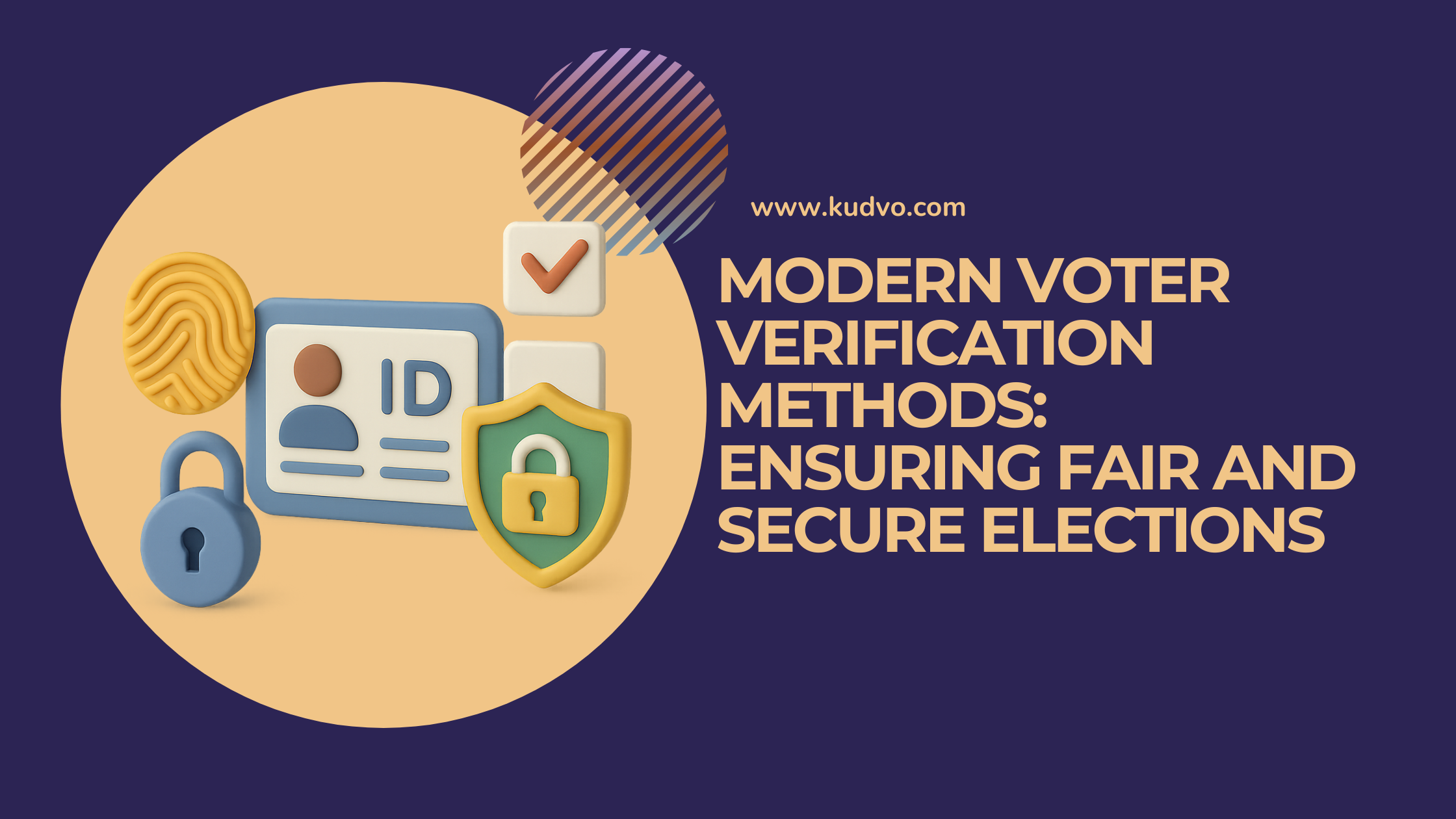Modern Voter Verification Methods: Ensuring Fair and Secure Elections
Introduction
Can we truly trust election results without robust voter verification?
In today’s digital-first world, voter verification has become a cornerstone of election integrity. As more elections incorporate online tools, digital voter rolls, and remote participation, the methods used to confirm a person’s identity are more important than ever.
This post explores modern voter verification technologies, why they matter, and how they help ensure elections are secure, fair, and inclusive. Whether you're a policy maker, civic tech enthusiast, or voter, you'll learn what powers the modern ballot box.
Bonus: We'll also spotlight how platforms like Kudvo help organizations implement secure digital voting with trusted verification tools.
1. Why Voter Verification Matters More Than Ever
Voter verification is the first line of defense against election fraud—and the key to voter confidence.
When done right, it ensures:
Only eligible voters can cast a ballot
Each person votes only once
Privacy and anonymity are preserved
Elections remain transparent and trustworthy
In the age of disinformation and digital threats, strong voter verification doesn’t just secure the process—it protects democracy itself.
2. Traditional vs. Modern Verification Methods
Let’s look at how voter verification has evolved—and what’s leading the way today.
🏛️ Traditional Methods:
Physical ID checks at polling stations
Manual voter rolls and signatures
Proof of residence or citizenship documents
These are still widely used—but they can be slow, error-prone, and vulnerable to fraud or human error.
💡 Modern Methods:
Biometric Identification
Uses fingerprint, facial, or iris scans
Highly accurate and hard to forge
Used in countries like India (Aadhaar system)
Digital ID Systems
Unique, government-issued digital IDs
Used in Estonia for secure online voting
Can be verified instantly and remotely
Two-Factor Authentication (2FA)
Combines a password or ID with a code sent via SMS or email
Adds an extra layer of protection for online or remote voting
Blockchain Verification
Ensures tamper-proof voter records
Allows voters to verify their identity and confirm their ballot was counted
Selfie Verification with AI
Voters take a live selfie matched against government-issued ID
Powered by AI facial recognition algorithms
Fast, remote-friendly, and growing in popularity
3. Global Examples of Voter Verification in Action
Modern verification isn't just a theory—it’s working across the globe.
🇪🇪 Estonia: A Digital Democracy
Citizens use a national digital ID to vote online securely.
The system verifies identity, encrypts votes, and allows for independent auditing.
Over 40% of Estonians now vote online.
🇳🇬 Nigeria: Biometric Voter Accreditation
Nigeria’s INEC uses fingerprint and facial recognition at polling stations.
Helps eliminate duplicate and underage voting.
Played a major role in improving trust in recent elections.
🧩 Kudvo: Secure Voting for Communities & Organizations
Kudvo empowers civic groups, universities, and local governments to conduct secure digital elections with:
Verified voter registration
Encrypted ballot casting
Anonymous ID checks
Admin tools for transparent auditing
Kudvo’s approach brings the sophistication of national systems to smaller-scale elections.
4. Key Considerations for Voter Verification Systems
No system is perfect—so strong planning and design are critical.
✅ Best Practices:
Balance security and privacy: Voter data must be protected, even while verifying identity.
Accessibility matters: Tech should work across devices and ability levels.
Avoid voter suppression: Overly strict ID laws can disenfranchise marginalized voters.
Test for bias: Biometric and AI tools must be audited to ensure fairness.
Plan for scalability: Systems should work for both small communities and large-scale elections.
🔄 A Hybrid Future?
Many experts believe the future lies in hybrid systems that blend digital IDs, biometrics, and traditional methods—offering flexibility and resilience.
Conclusion
Voter verification is no longer just about checking a name on a list—it’s about protecting elections from fraud, interference, and doubt.
To recap:
Strong verification is essential for secure, fair elections
Biometric IDs, digital identities, and AI verification are leading the way
Real-world examples like Estonia and Nigeria prove it works
Tools like Kudvo make it accessible for any community
Takeaway:
In the digital age, how we verify voters shapes how we trust elections. With the right tools and strategies, we can ensure every vote counts—and every voter is counted.
